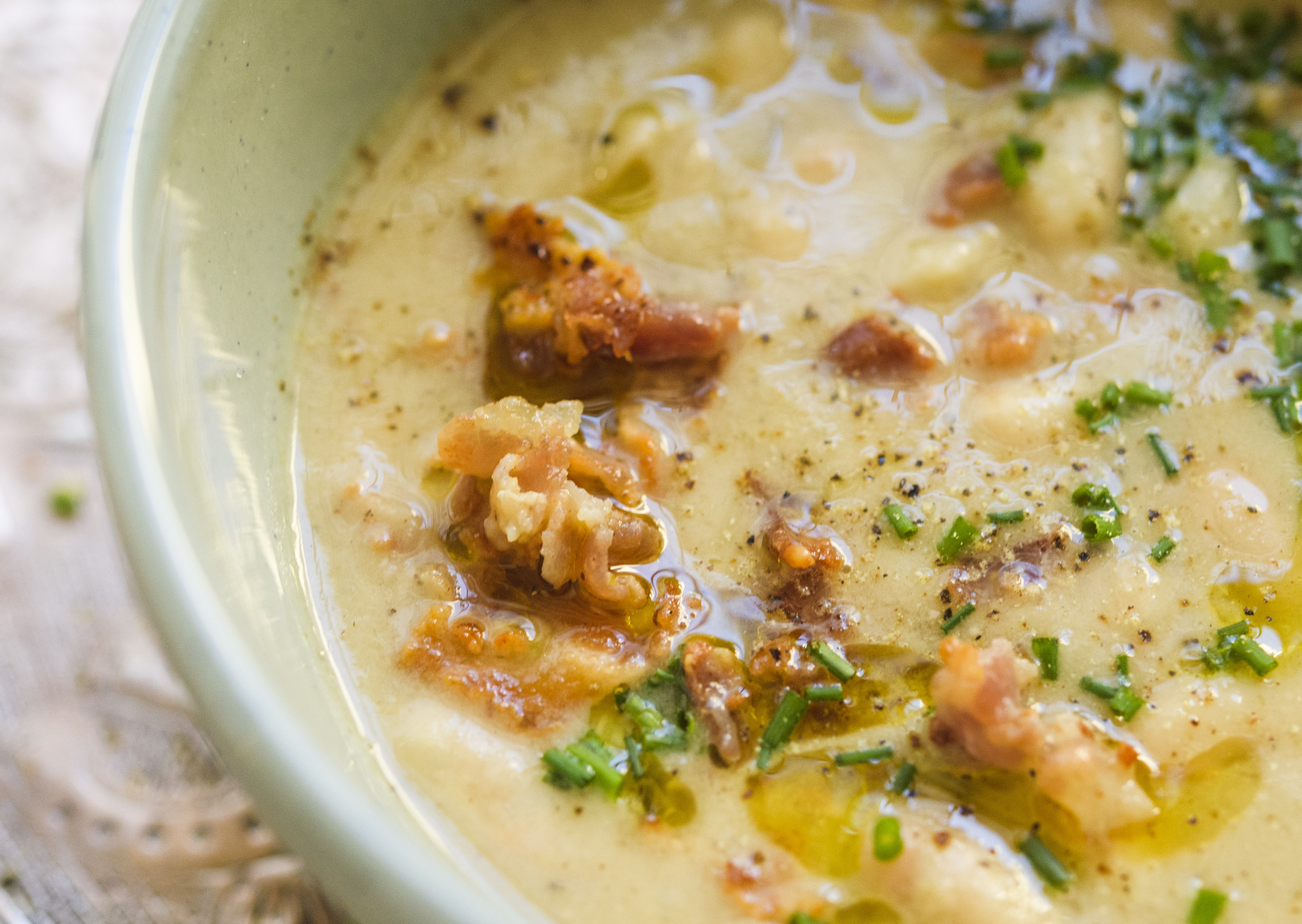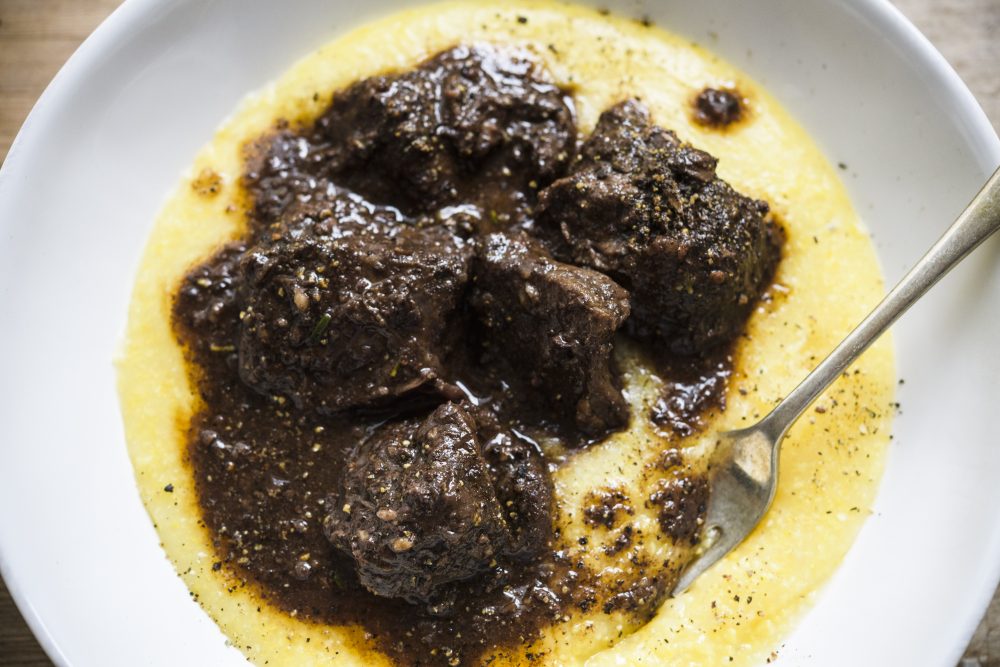If you buy a loaf or two from the local bakery and let it go rock-hard stale, there’s redemption. Soak the hard pieces in a bowl of warm water for 5 to 10 minutes. Once tender enough to break apart and squeeze with your hands, ring out as much moisture as possible from the bread and transfer to a rimmed baking sheet, breaking into crouton-sized pieces (uniformity isn’t important). Drizzle with plenty of olive oil, salt and pepper and bake at 375 degrees until browned and crisp, stirring every 10 minutes or so. Use in salads, soups, or over beans. If you prefer, the croutons can be prepared in nonstick skillet over medium heat, stirring occasionally.
While the peposo roasts, consider making a pan full of roasted tomatoes, which cook at the same temperature. The low-and-slow roasting brings out the best in mild-tasting supermarket tomatoes, concentrating the moisture and giving them an addictively chewy texture. They can be chopped up and added to the white beans, pasta fagioli or ribollita, stuffed into sandwiches or added to soups and frittatas.
The Sunday Recipe:
One of my favorite ways to solve the problem of weeknight cooking is to make a large batch of stew on Sunday. It is easy to repurpose during the week in a variety of ways, each with its own distinct personality.
Peposo alla Fornacina is a boldly flavored Tuscan beef stew redolent of black pepper, red wine, and garlic. It’s a stand-alone meal with smashed or mashed potatoes, buttered noodles, or our favorite option, polenta.
During the Week...
Pappardelle with Tuscan Beef Ragu: Leftovers from the peposo can easily be turned into a rich beef ragu with a few minor additions. Before you boil the pasta, consider blanching broccoli or green beans until crisp-tender in the seasoned water (3-4 minutes), then tossing with a little garlic sautéed in olive oil or butter spiked with chili flakes. Spritz with lemon juice before serving the vegetables alongside the pasta.
Ribollita: For a simple spin on ribollita, simmer the beans below with a few handfuls of baby spinach or arugula, the remainder of the peposo (just the sauce or include some of the chopped meat), and crispy fried croutons—made with either fresh, crusty bread or the hard, staled bits hiding in the back of the bread box (see below). Serve with Parmesan and extra-virgin olive oil.

The Sunday Recipe:
Consider a pot of beans as money in the bank. Our White Beans with Rosemary and Thyme is a quick riff on classic Tuscan fagioli al fiasco (cannellini beans traditionally cooked overnight in cooling embers). The beans taste great on their own with a spoonful of extra-virgin olive oil, braised greens or a couple sausage links. Or, the beans can easily be turned into pasta con fagioli and ribollita. Make a double batch to stretch them through the week.
During the Week...
Tuscan White Beans with Sausages: Fry your favorite Italian sausages and serve over the beans (warming the beans in the same skillet to absorb the meat’s juices and browned bits of fond) with crusty bread and a simple green salad dressed with your favorite vinaigrette (we like peppery arugula paired with a white balsamic-olive oil dressing: 3-parts oil to 1-part vinegar emulsified with a spoonful of Dijon mustard and seasoned to taste).
Pasta con Fagioli: Heat and thin the beans with a little broth or pasta water to loosen the texture, then mix with 12 ounces (dry weight) of cooked chunky pasta, like orecchiette or tubetti, and top with a shower of grated Parmesan or Pecorino and a liberal drizzle of extra-virgin olive oil. If you like, fold in a handful of chopped oil-packed sun-dried tomatoes, sweet-tart piquanté peppers or roasted tomatoes (see aside) for accent.
Related Recipes

Sign up to receive texts
Successfully signed up to receive texts!
We'll only send our very best offers - Like a $15 store credit to start.
By entering your phone number and submitting this form, you consent to receive marketing text messages (such as promotion codes and cart reminders) from Christopher Kimball's Milk Street at the number provided, including messages sent by autodialer. Consent is not a condition of any purchase. Message and data rates may apply. Message frequency varies. You can unsubscribe at any time by replying STOP or clicking the unsubscribe link (where available) in one of our messages. View our Privacy Policy and Terms of Service.






